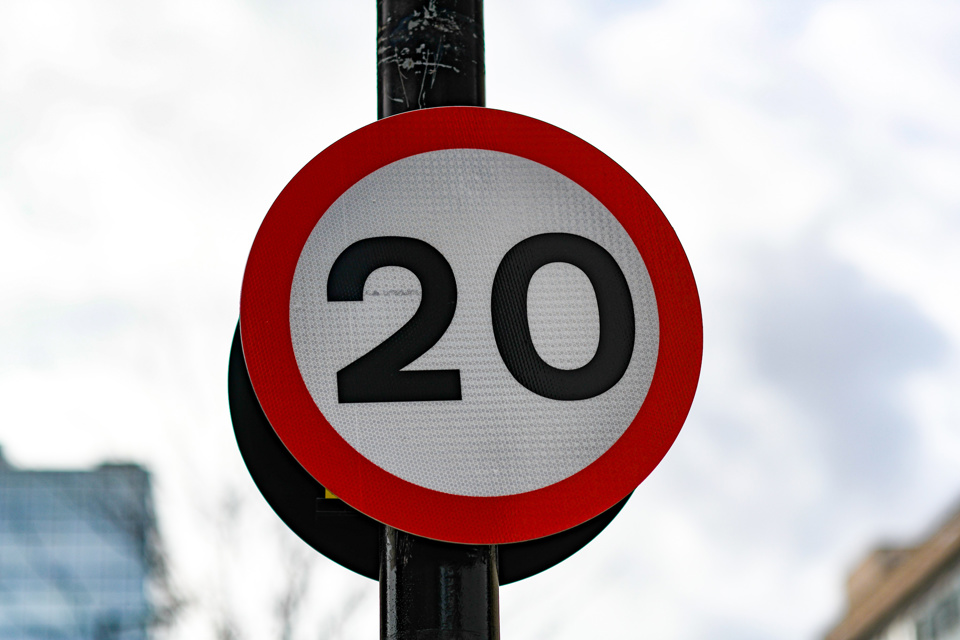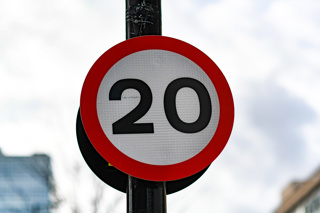The rest of the UK should follow the Welsh Government’s approach to reduce the speed limit in built-up areas to 20mph, Red Driver Risk Management has said.
Legislation to lower the default national speed limit on residential roads and busy pedestrian streets from 30mph to 20mph in Wales has been approved by the Senedd.
Wales becomes the first UK nation to make the lower speed the default choice following trials in eight communities across Wales and will be rolled out nationally in September 2023.
Seb Goldin, chief executive officer at Red Driver Risk Management, said the Welsh Government’s decision was ‘sensible, proportionate, and nuanced’, ensuring areas of most risk see limits dropped by default to 20mph while some built-up areas can remain at 30mph, if proven to be safer.
He has called on the rest of the UK to adopt a similar approach – especially as the increase in near-silent electric vehicles (EVs) could cause danger to pedestrians and cyclists unaware of their presence in urban environments, he said.
Goldin added: “While there are already 20mph limits around the UK, the Welsh Government is going further and 20mph limits in urban areas can have a positive effect in reducing accidents, while businesses operating in these built-up environments should see this as positive step in road safety. Not least, this will help as firms increase the number of EVs on their fleets.
“While this decision will undoubtedly receive mixed reviews, the benefits around road safety cannot be ignored. The World Health Organisation (WHO) states that the most effective way to improve pedestrian safety is to reduce the speed of vehicles. In addition, the Royal Society for the Prevention of Accidents (RoSPA) states that 45% of pedestrians get killed when struck by a car going at 30mph or less, but only 5% when going at 20mph or less.
“Critics say it will slow journey times, but our driver training regularly shows there are many techniques that allow you to drive more slowly yet get to places quicker.”
Goldin said Red Driver Risk Management would be interested to see any conclusions drawn from studies completed as part of the first phase of the scheme, but also supports the idea that a ‘blanket’ approach to the introduction of 20mph into built-up areas is not the way to go.
He added: “There will be many roads around the country where 30mph will remain an appropriate speed. It can be counter-productive to force drivers to drive more slowly when it is not necessary. They become frustrated, and this can lead to mistakes.
“Therefore, providing local authorities with the power to manage road safety in their local communities seems logical, if they introduce limits in the right way and as the saying goes ‘knowledge is power’ too, and driver education must be at the forefront of the roll out programme.”
Goldin said recent research by the ‘20s Plenty’ campaign shows that a 20mph limit can reduce CO2 levels and NOx by more than 25%, compared to 30mph.
“With many local authorities having already introduced 20mph speed limits in town centres and residential areas, it seems only a matter of time before the wider changes in Wales are adopted by the rest of the UK. Taking the benefits into account, it’s difficult to argue against it,” he added.
In March 2020, TfL introduced a 20mph speed limit on all of its roads within the central London congestion charging zone as part of its Vision Zero commitment to eliminate death and serious injury on London’s roads.
This included a new 20mph limit on Victoria Embankment and along the Millbank.























Login to comment
Comments
No comments have been made yet.